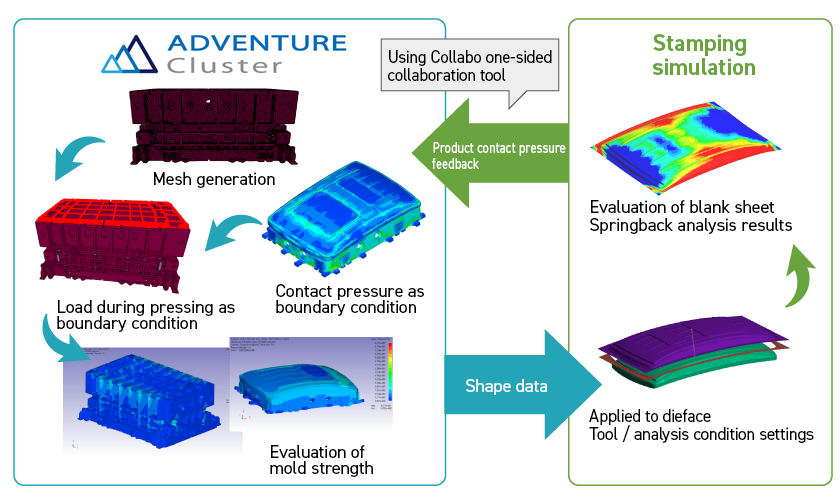Evaluation of mold rigidity considering the press forming process
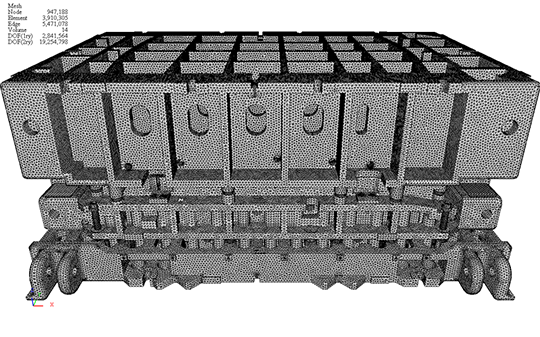
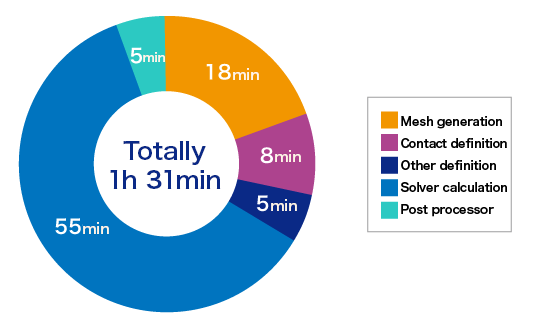
By using the ADVENTURECluster standard mapping tool "collabo", the contact pressure generated on the product obtained from press forming analysis software can be applied as a load condition to the mold surface. This allows for strength evaluation that takes into account of the load generated on the mold during press forming. Furthermore, the deformed shape of the mold after strength analysis can be imported into the press forming analysis software, making it possible to calculate springback that takes into account of the deformed state of the mold. Calculation times are fast due to this model is made of the large-scale solid element that ADVENTURECluster excels at.
Analysis overview
| Target | Press mold |
|---|---|
| Items | Static analysis, heat transfer analysis, Collabo |
| No. of nodes/parts | 6,418,266 nodes,104 parts |
| Calculation time | 55 minutes: 16 cores |
|---|---|
| Coupled software | Press simulation software |
We apply the pressing conditions to the press mold assembly model, perform static elasticity and contact analysis, and confirm the results and calculation time.
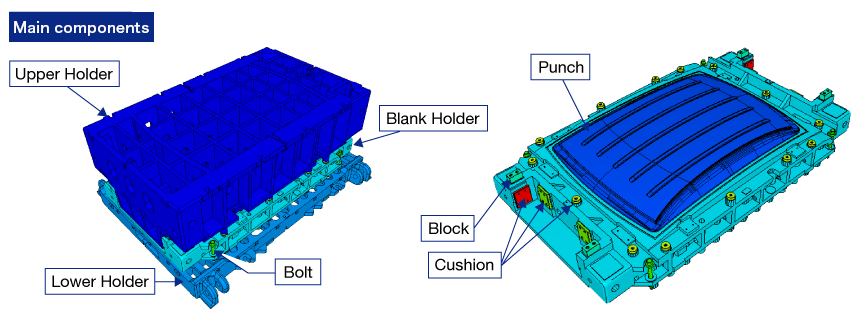
Background/Issues
The mold assembly model is large in scale and takes a long time to calculate.
Analytical Needs
To reproduce the deformed mold by applying the surface pressure of high tensile steel to the mold forming surface as a load condition.
To analyze the strength of the press forming process, taking into account the load on the mold.
Advantages
Using the ADVENTURECluster standard mapping tool collabo, it is possible to easily map the heat and pressure data of press software.
High-speed calculation of mold assembly models is possible.
Furthermore, by mapping the results back to a "press simulation software" it is possible to reproduce the effect of springback.
It is possible to check the transmission of force in cross-sections that are difficult to measure.
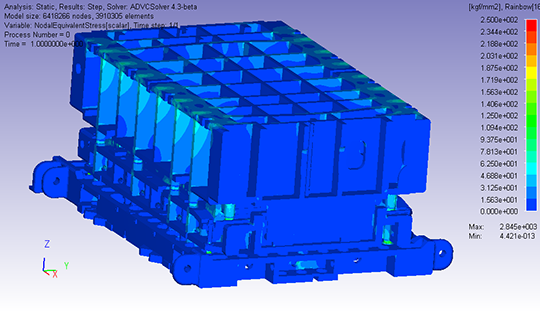
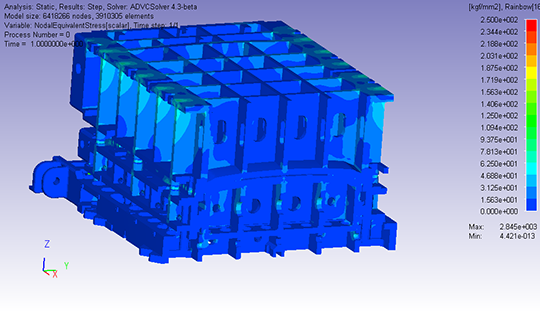
The high parallel efficiency makes it possible to make full use of the machine's potential.
| Windows (Pre・Post Processor) | |
|---|---|
| OS | Microsoft Windows XP Professional x64 |
| CPU | AMD Opteron 252 (Dual-Core 2.6GHz) |
| Memory | 16GB |
| Graphics Card | NVIDIA Quadro FX 3400 |
| Linux(Solver) | |
|---|---|
| Type | HP ProLiant BL280c G6 |
| OS | Red Hat Enterprise Linux Server release 5.3 (Tikanga) |
| CPU | Intel Xeon X5570 (2.93GHz QuadCore) |
| Memory | PC3-10600 RDIMM 48GB (24GB/node) |
| Interconnect | 4X QDR InfiniBand |
